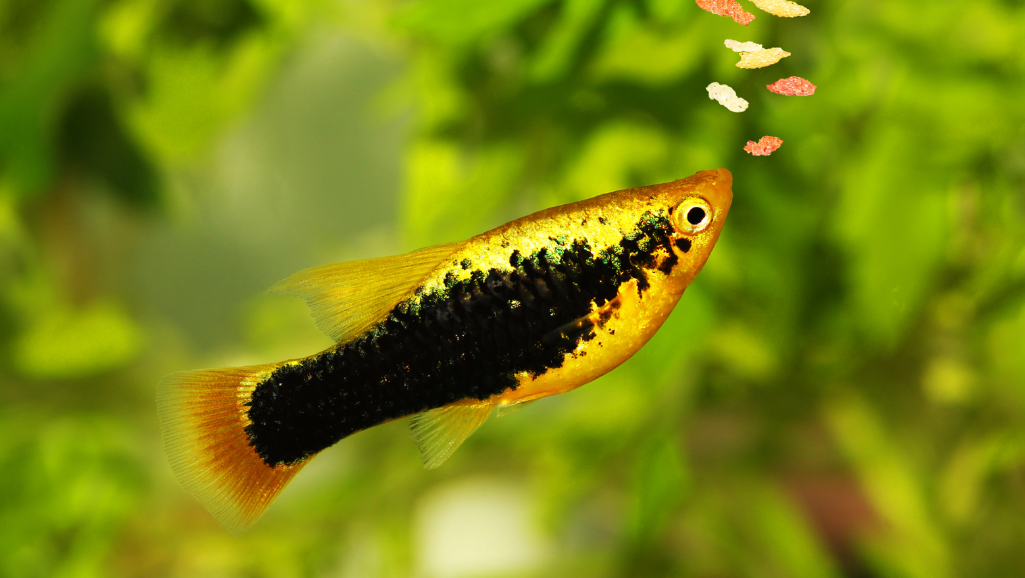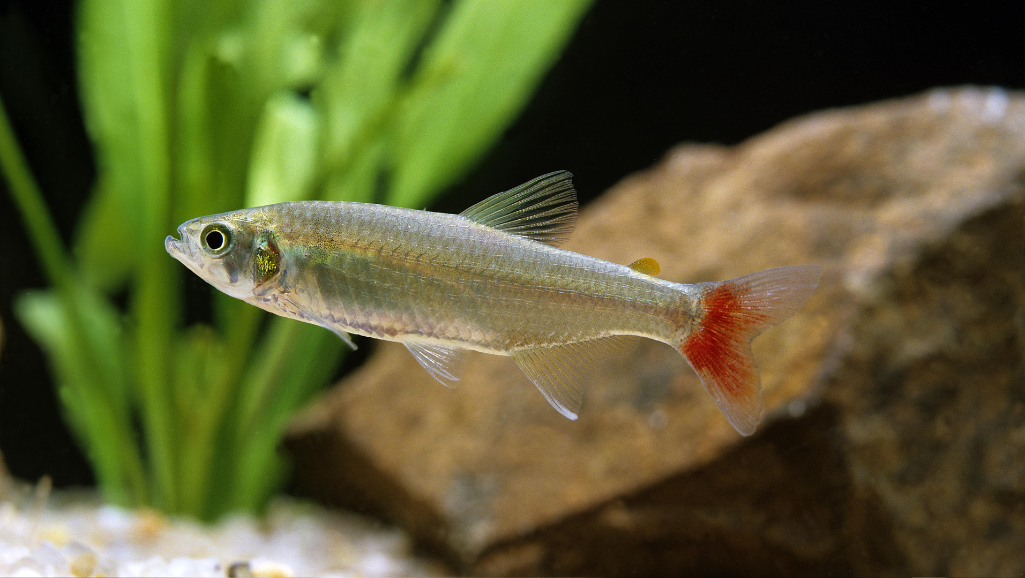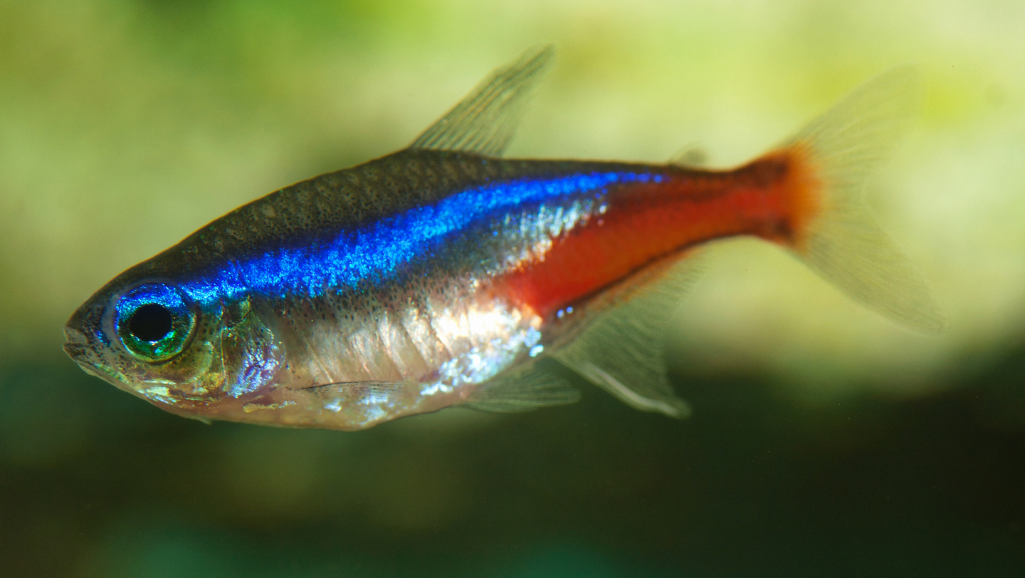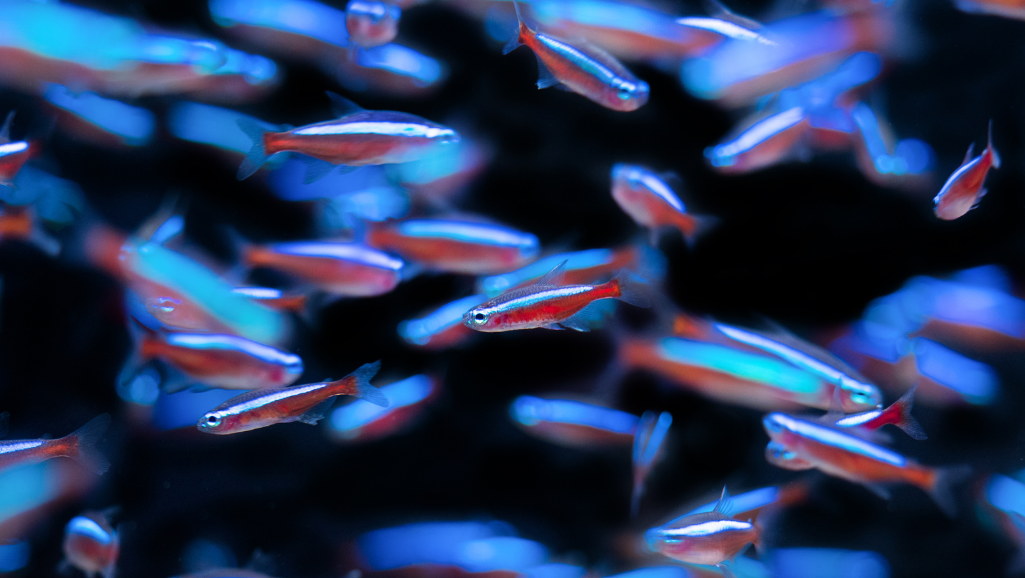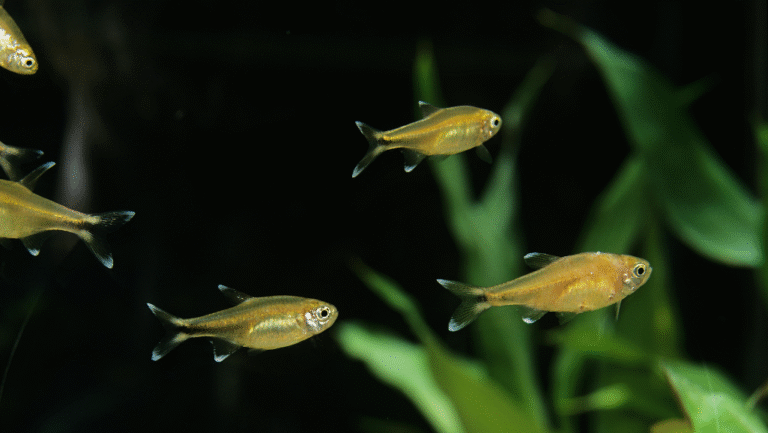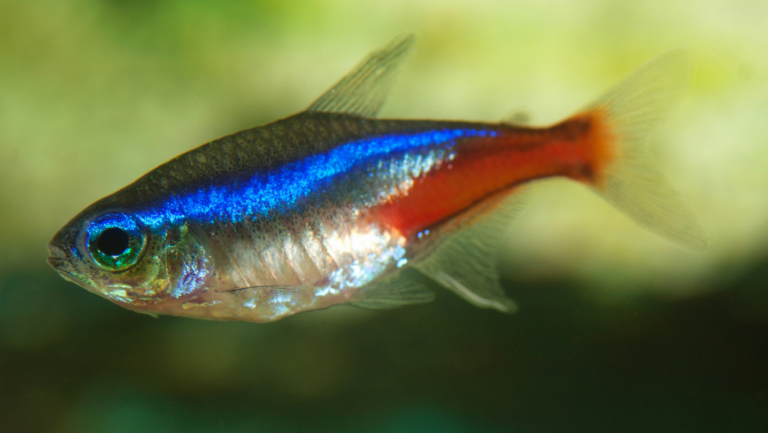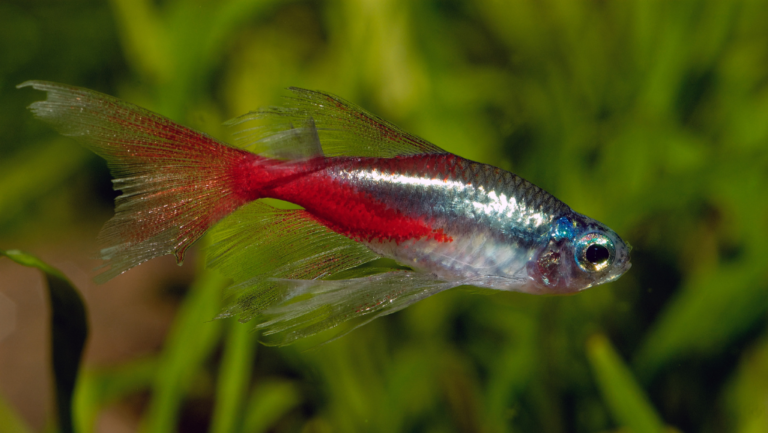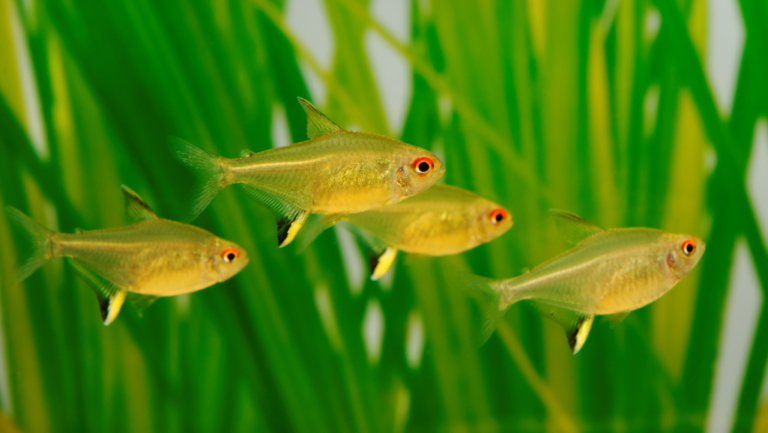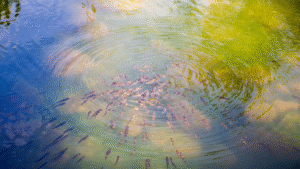Exploring the world of Bloodfin Tetra care, aquarists find more than just a fish. They discover a captivating freshwater inhabitant. These Bloodfin Tetras have shiny silver bodies and bright red fins. They come from South America’s Amazon and Orinoco rivers.
Their beauty in aquarium keeping is not just about looks. It’s also about their lively nature and easy care. This makes them popular among both new and experienced fishkeepers.
For tropical fish care, like the Bloodfin Tetra, diet is key. They need insect larvae, zooplankton, shrimp, and veggies. These active fish do well in clean, well-maintained tanks that match their natural home.
To help them live up to 10 years, follow fish keeping tips. Keep water temperature, pH, and cleanliness in balance.
Key Takeaways
- Bloodfin Tetra requires diligent Bloodfin Tetra care to live up to 10 years.
- Creating an ideal tank setup entails a minimum size of 36 liters to encourage their playful social interactions.
- To maintain healthy bloodfin populations, their diet should respect the 1% to 2% body weight guideline, avoiding overfeeding.
- Fostering their tropical essence, Bloodfin Tetra appreciate a water temperature near 77°F and a pH of 6.5 to 8.0.
- Vibrant male Bloodfin Tetra displays help in distinguishing sexes for breeding purposes.
- Implementing good filtration systems is non-negotiable in sustaining water quality and preventing disease.
- When breeding, large quantities of spawn may result, necessitating forethought into fry care.
Introduction to Bloodfin Tetra
Welcome to the world of Bloodfin Tetra species, also known as Aphyocharax anisitsi. These colorful freshwater fish are loved for their bright looks and calm nature. They are great for both new and seasoned fish keepers, bringing life and color to any tank.
Overview of Bloodfin Tetra Species
Bloodfin Tetras come from South America, like the Amazon and Paraguay rivers. They have a shiny silver body with bright red fins. This makes them a favorite for adding color to tropical fish habitats in home aquariums.
Natural Habitat and Distribution
Bloodfin Tetras live in the soft, flowing waters of South America. They are found in places like Brazil, Paraguay, and Argentina. They like water that’s not too hard and has a good temperature, just like their home rivers.
Characteristics and Appearance
Bloodfin Tetras grow to about 4-5.5 cm long, fitting well in community tanks. They have clear bodies that shine green under light. Their red fins stand out, showing how healthy and happy they are. They also get along well with other fish, making them a hit among freshwater fish fans.
In short, Bloodfin Tetras are loved for their beauty and easy care. They are a great pick for anyone wanting to add a bit of nature’s beauty to their aquarium.
Ideal Tank Setup
Creating the perfect home for Bloodfin Tetras requires understanding their specific needs. This is more than just making the tank look good. It involves knowing the aquarium care and water parameters needed for their health and long life.
Recommended Tank Size
When setting up your aquarium setup, size is key for a healthy fish tank environment. Bloodfin Tetras need at least 20 gallons to thrive. This size allows them to swim freely and interact, which is vital for their happiness and health.
Essential Tank Equipment
- Filtration System: A good filter is essential for clean, clear water. It keeps ammonia and nitrate levels in check.
- Heater: Keeping the water temperature stable between 64°F and 82°F is important. Bloodfin Tetras do best in warm water.
- Lighting: Good lighting makes the tank look great and helps plants grow.
- Water Conditioner: Use a high-quality dechlorinator to remove harmful chemicals from tap water and make it safe for your fish.
Suitable Water Conditions
Keeping the water conditions right is key for Bloodfin Tetras’ health. Aim for a pH level between 6.0 and 8.0 and water hardness of 2 to 3 dGH. Regular checks and adjustments help keep these levels stable, creating a great home for Bloodfin Tetras.
Feeding and Nutrition
Knowing about the Bloodfin Tetra diet and fish nutrition is key to keeping these fish healthy and colorful. Bloodfin Tetras eat a mix of foods, just like they do in nature. We’ll talk about the best foods and how often to feed them to keep them full of energy and health.
Best Food Options for Bloodfin Tetra
- Natural Foods for Fish: Live or frozen foods like brine shrimp, daphnia, and bloodworms are great. They meet their nutritional needs and make them forage naturally.
- Dried Fish Food: Choose high-quality flakes or pellets with aquatic proteins. Buy small amounts to keep food fresh.
- Special formulations for small omnivorous fish are also good. They ensure your fish get the right vitamins and minerals.
Feeding Frequency and Portion Sizes
Feeding your Bloodfin Tetras right is as important as what you feed them. Overfeeding can harm their health and water quality.
- Feed adult Bloodfin Tetras twice a day, letting them eat in three minutes.
- Young or growing Tetras need more food, three times a day. Focus on protein-rich foods to help them grow.
- Don’t feed them more than 1-2% of their body weight each day. Adjust based on their growth and activity.
For more on their environment and tank setups, check out this guide on Bloodfin Tetra care.
Social Behavior and Compatibility
Understanding the Bloodfin Tetra social behavior is key for a peaceful aquarium community. These fish add color and are important in a shared tank.
Choosing the right compatible tank mates for Bloodfin Tetras is important. Look for peaceful fish that like the same water and behave alike. This helps keep everyone healthy and happy.
Tank Mates for Bloodfin Tetra
- Small Loricariids: Known for their peaceful nature, ideal as tank mates.
- Corydoras Catfish: They share the bottom spaces of the tank, creating a balanced environment.
Social Dynamics and Group Behavior
Bloodfin Tetras are best in groups, which affects the fish community dynamics. Having six or more in a group keeps them calm and peaceful. This way, they are less likely to bother other fish.
By keeping these points in mind, you can make a beautiful and healthy aquarium. It will be good for both the Bloodfin Tetras and their tank mates.
Health and Common Diseases
Keeping the Bloodfin Tetra health in top shape is key for their long life and lively behavior in your tank. These colorful fish, known for their full fins, can get sick if you don’t care for them right. This is because they can catch aquarium fish diseases.
Sticking to strict aquarium maintenance is vital for fish infection prevention. Regular checks and a balanced environment help avoid diseases. This ensures these fish live a long, healthy life.
Signs of a Healthy Bloodfin Tetra
- Bright and vivid coloration.
- Active swimming and responsive movements.
- Good appetite; eats vigorously during feeding times.
- Fins are intact, showing no signs of tearing or fraying.
Watching for these healthy fish signs often helps spot health problems early. This means you can act fast to help them.
Common Health Issues and Prevention
Even though they’re tough, Bloodfin Tetras can get sick with mycobacteriosis and columnaris. These diseases show up as skin sores, lost scales, or odd swimming.
- Mycobacteriosis: Often caused by bad water quality. Regular water changes, up to 25% every two weeks, are a must.
- Columnaris: Avoid it by keeping water between 76 to 80°F and using good filters to keep water clean.
Preventing these diseases is easier than treating them. Keeping the right pH and hardness levels is important. Also, feeding them a mix of foods, including live ones like bloodworms, helps their immune system.
By taking these steps, your Bloodfin Tetras can stay healthy and lively in your aquarium.
Breeding Bloodfin Tetra
Starting a Bloodfin Tetra breeding journey means learning about their spawning behavior and the aquarium breeding setup needed. These fish, with their bright silver bodies and red fins, are stunning in any tank. Breeding them can be very rewarding for fish keepers.
To breed Bloodfin Tetras successfully, you need to create a natural environment. This means setting up a special breeding tank. It should have the right water conditions and settings.
Breeding Conditions and Setup
The breeding tank should look like their South American homes. It should be quiet, with soft light and lots of plants. This helps them spawn naturally and reduces stress.
The tank’s water should be between 64°F and 82°F, with a pH of 6.0 to 8.0. Use gentle filters to keep the water clean. This helps the spawning process and keeps the fry safe.
Care for Fry
After spawning, fry care is key for the young Bloodfin Tetras. The tank should have plants or a spawning mop to catch the eggs. Once hatched, keeping the water clean and providing the right fry care is vital.
Feed the fry high-quality food from the start. Start with infusoria or liquid fry food, then move to baby brine shrimp as they grow. This early nutrition is important for their health.
Knowing how to breed Bloodfin Tetras, from setting up the tank to caring for the fry, is rewarding. It lets aquarists see new generations thrive and helps the hobby grow sustainably.
Conclusion and Final Tips
Bloodfin Tetras bring joy and movement to freshwater aquariums. They need a big tank, stable water, and the right temperature. A varied diet and a school of 6-8 Tetras keep them healthy and colorful.
Recap of Key Care Practices
Keeping water quality and temperature stable is essential. Bloodfin Tetras can survive in cooler temperatures without heaters. But, a consistent range is best for their health.
Creating a natural environment is important. This includes a secure tank and a breeding space for their eggs. They grow up to 5-6 cm and can lay hundreds of eggs.
Additional Resources for Aquarists
Learning is vital for tropical fish care. There are many resources available, from online sites to local experts. They can help you understand Bloodfin Tetras better and prevent diseases.
Bloodfin Tetras are safe and easy to care for. Following these tips will make your aquarium lively and beautiful. Your Bloodfin Tetras will add wonder to your underwater world.

